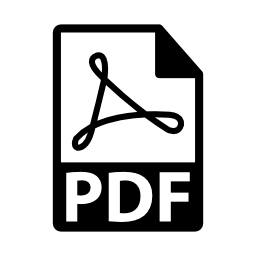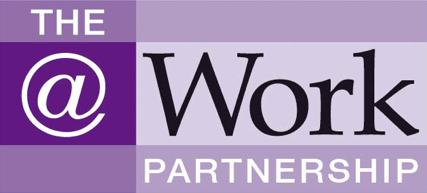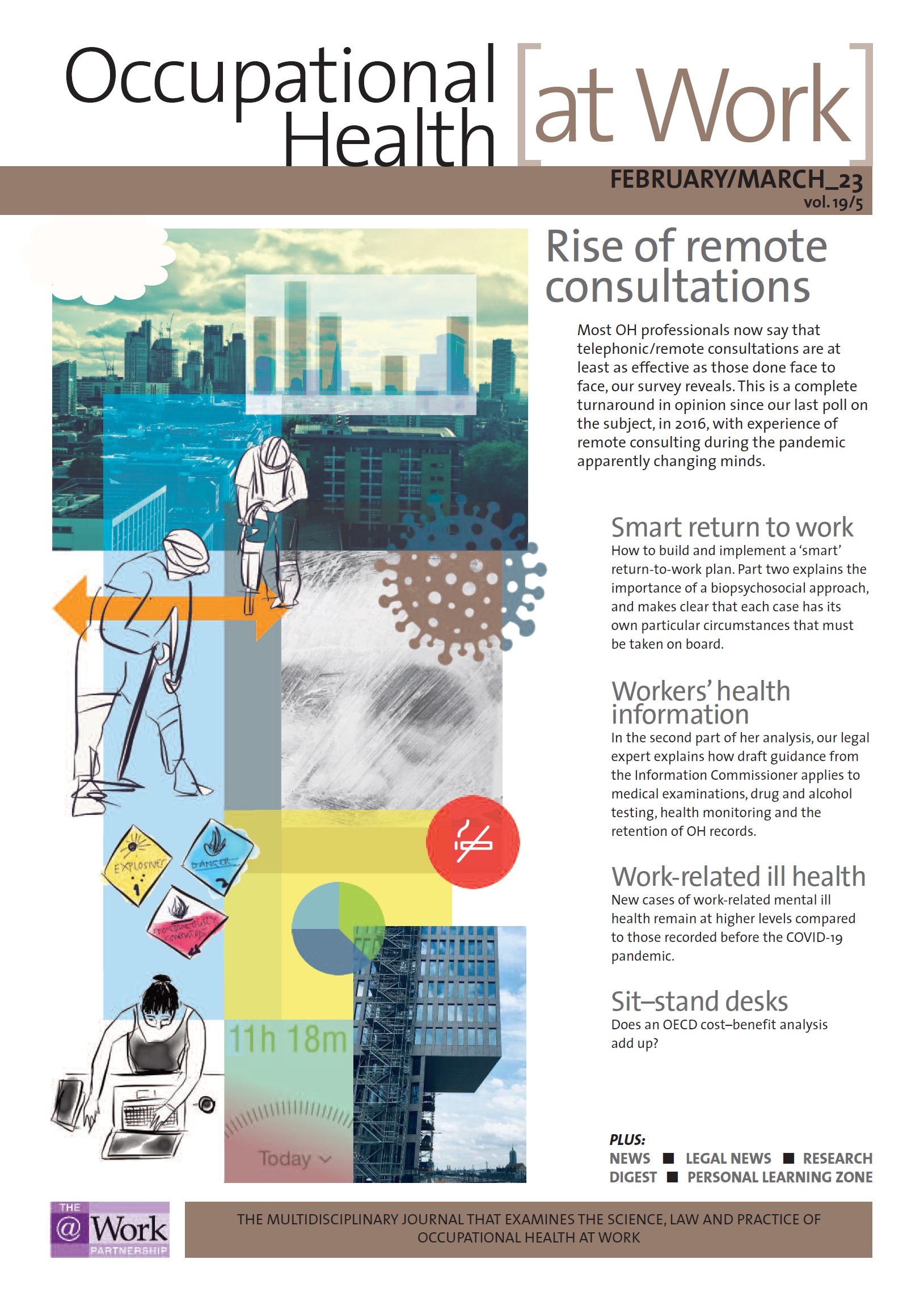February/March 2023 (vol. 19/5)
ContentsFeaturesNewsLegal
NewsResearch DigestResearch PlusCPD
 FEATURED ARTICLE
FEATURED ARTICLE
Summary:
This issue of Occupational Health [at Work] features a Personal Learning Zone (PLZ) article recommended for continuing professional development (CPD). The assignment questions, ‘Personal learning statement’ and ‘Certificate of engagement’ are available to subscribers at ohaw.co/AWPcpd. These will also be stored in your password-protected PLZ. The PLZ will help you document your own CPD. Occupational health physicians and nurses, occupational hygienists and other professionals can use the resource in support of their specialism’s revalidation or CPD requirements.
Pages 37-40. Employment practices: workers’ health. Consultation on the ICO draft employment practices guidance on information about workers’ health has now closed. OH professionals should familiarise themselves with key aspects of the guidance, as they affect everything from the collection and retention of fitness-for-work information at recruitment, to decisions about retaining health records and ensuring they are up to date
ADDITIONAL CPD
The following articles, news and research items are suggested reading for CPD and professional revalidation. Subscribers can complete their online Personal Learning Zone CPD record at ohaw.co/AWPcpd
Pages 03. Sit–stand desks are a popular intervention, but claims that they improve productivity and help tackle overweight and obesity in the workforce should be treated with caution.
Pages 05. Digital monitoring systems have the potential to enhance occupational safety and health in real time; but they should be used to benefit workers’ health rather than to monitor performance.
Pages 10-11. The EAT decision in Morgan v Buckinghamshire Council highlights that some people may hide their disability (in this case, autism) through ‘masking’ techniques and, depending on the facts, it can be harassment for an employer to criticise them for doing so.
Pages 16-25. ‘Smart’ return-to-work plans can help workers to make a successful journey back to work after injury or illness. However, the plan needs to identify specific solutions to the particular obstacles impeding the return
Pages 26-36. Telephonic/remote OH consultations can be as effective as those done face to face. It is important to understand their limitations as well as the potential benefits.
Pages 41-42. Our compendium of recent research includes studies on: the combined effect of psychosocial risk factors on sickness absence; breast cancer in female flight attendants; and interventions aimed at preventing back pain in office workers.
Author: The At Work Partnership Ltd
Occupational Health at Work February/March 2023 (vol. 19/5) pp43



